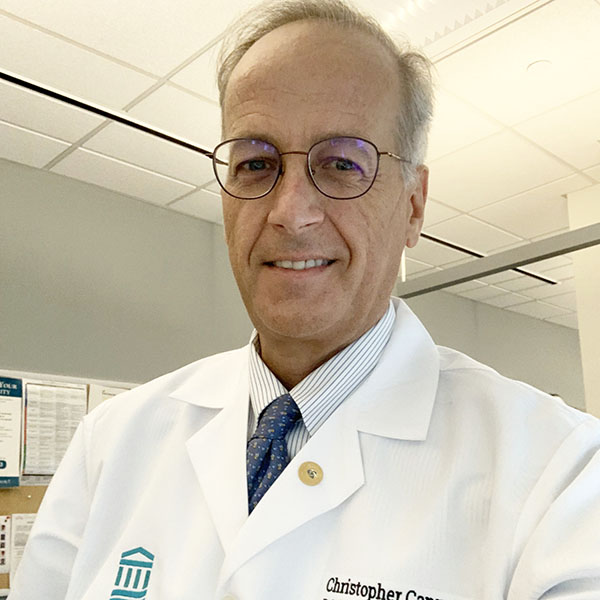Gene editing: A one-time fix for dangerously high cholesterol?
This therapy — which disables a gene that regulates LDL cholesterol levels — is being tested in high-risk heart attack survivors. Here’s a look at the background and potential future of gene editing for heart disease.
- Reviewed by Christopher P. Cannon, MD, Editor in Chief, Harvard Heart Letter; Editorial Advisory Board Member, Harvard Health Publishing

Among your more than 20,000 different genes, one provides instructions for a protein called PCSK9, which helps regulate levels of "bad" LDL cholesterol in your bloodstream. About one in 250 people has a variant in this gene that causes LDL cholesterol to skyrocket, sometimes to more than three times the optimal ceiling of 100 mg/dL. This genetic condition, called familial hypercholesterolemia, is the leading cause of premature heart attacks in America.
But other people have different PCSK9 gene variants that have the exact opposite effect. Their LDL cholesterol is extraordinarily low—and their risk of heart attack is also far below average. This discovery, made by Dallas Heart Study researchers in 2005, spurred industry scientists to develop drugs called PCSK9 inhibitors (see "How does PCSK9 affect your cholesterol level?").
"From a drug development perspective, it was very exciting, because just 10 years later, there were two FDA-approved medications that could dramatically lower LDL," says Dr. Pradeep Natarajan, director of preventive cardiology at Harvard-affiliated Massachusetts General Hospital. The drugs, alirocumab (Praluent) and evolocumab (Repatha), can slash LDL levels by 50%. Taking one of these drugs with a cholesterol-lowering statin can further de-crease a person’s risk of heart attack and related problems by approximately 15% compared with taking a statin alone.
How does PCSK9 affect your cholesterol level?The PCSK9 protein acts like a tag that signals LDL receptors to be broken down in liver cells, which means there are fewer receptors to clear LDL from the bloodstream. As a result, LDL levels rise. High LDL accelerates the buildup of fatty plaque in the heart’s arteries, raising heart attack risk. But therapies that either block or prevent the creation of PCSK9 have the opposite effect. More LDL receptors remain active in the liver to remove LDL. Blood levels of LDL plummet, lowering the risk of a heart attack. |
From inhibition to suppression
While taking a statin means swallowing a pill every day, the PCSK9 inhibitors are given by self-injection once or twice a month. But inclisiran (Leqvio), an equally effective drug approved last year, requires an injection just once every six months. Instead of blocking PCSK9 after it’s made, inclisiran prevents the protein from being made in the first place, using a technique called RNA interference.
Now, a cutting-edge therapy that uses gene editing to permanently shut down PCSK9 production is being tested in people with familial hypercholesterolemia who’ve already had a heart attack. The CEO of Verve Therapeutics, the company leading the trial, is former Harvard Medical School professor Dr. Sek Kathiresan.
To create the therapy, scientists relied on a modification of the powerful gene editing tool called CRISPR, which Dr. Kathiresan describes as "a molecular pencil and eraser" that changes a single letter in the instructions for making PCSK9. The one-time infusion contains tiny lipid particles that contain the editing tools, which travel through the blood to the liver. Once there, the particles release their contents, and the editor goes to work in liver cells. Studies in monkeys show that a single infusion lowered blood levels of PCSK9 by 89%, with a corresponding drop in LDL of 61%. Early data from the first human trial should be available later this year.
Future possibilities?
If the therapy proves to be safe and effective, it could also potentially treat people who don’t have familial hypercholesterolemia but who instead have "garden variety" high cholesterol, says Dr. Natarajan. "People with inactivating PCSK9 variants in both gene copies that lead to LDL values as low as 15 mg/dL are alive and well, which suggests such levels are safe," he says. And so far, evidence suggests that PCSK9 gene editing is very specific and without identified "off-target" effects in other places on the genome.
Despite the many available treatments to reduce LDL, many people don’t take these drugs consistently over the long term for a variety of reasons, such as insurance and access issues. That makes the "one and done" option of gene editing especially appealing, particularly since high LDL is very common and an important contributor to cardio-vascular disease, the leading cause of death in this country, Dr. Natarajan says. As the Verve trial moves forward, investigators at Harvard and elsewhere are developing gene editing therapies for other inherited heart conditions, including cardiac amyloidosis and hypertrophic cardiomyopathy, which currently have only limited treatment options.
Image: © Nanoclustering/Science Photo Library/Getty Images
About the Author

Julie Corliss, Executive Editor, Harvard Heart Letter
About the Reviewer

Christopher P. Cannon, MD, Editor in Chief, Harvard Heart Letter; Editorial Advisory Board Member, Harvard Health Publishing
Disclaimer:
As a service to our readers, Harvard Health Publishing provides access to our library of archived content. Please note the date of last review or update on all articles.
No content on this site, regardless of date, should ever be used as a substitute for direct medical advice from your doctor or other qualified clinician.
















